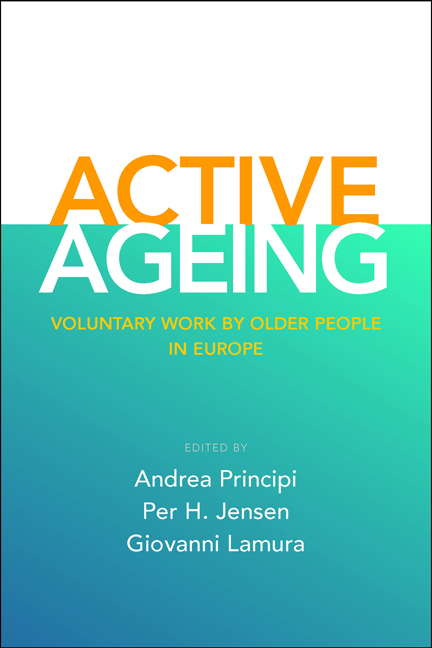Book contents
- Frontmatter
- Contents
- List of tables and figures
- Notes on the contributors
- Acknowledgements
- Foreword
- Part I Realising volunteering by older people in Europe An overarching approach
- Part II Opportunities and restrictions for older volunteers National experiences
- Part III Opportunities and restrictions for older volunteers Case studies in European voluntary organisations
- Part IV Conclusions
- Index
thirteen - Organisations’ age management of older volunteers: pointing to the future
Published online by Cambridge University Press: 05 March 2022
- Frontmatter
- Contents
- List of tables and figures
- Notes on the contributors
- Acknowledgements
- Foreword
- Part I Realising volunteering by older people in Europe An overarching approach
- Part II Opportunities and restrictions for older volunteers National experiences
- Part III Opportunities and restrictions for older volunteers Case studies in European voluntary organisations
- Part IV Conclusions
- Index
Summary
Introduction
In the two previous chapters we presented information on the current situation of voluntary organisations: their characteristics, their policies towards older volunteers and their perception of older volunteers. The social environment of voluntary organisations, however, is changing and will continue to change over the next few decades. This may pose new challenges as well as offer new opportunities for volunteering. Demographic change, for instance, may result in a lower supply of care by younger generations and a greater pressure on older people to care for frail members within their own family circle, which will presumably have a negative effect on the supply of older volunteers. Population ageing, however, is also associated with increasing longevity and better general health among older people. This, in turn, may increase the number of potential recruits for voluntary organisations. This potential growth in the number of volunteers, however, may be confined by a European-wide trend to increase the mandatory retirement age. Moreover, future generations of older people will be better educated and higher educated people are inclined to stay in the labour market longer. Thus, future prospects in the supply of older volunteers are highly uncertain.
In light of the trends described above, this chapter focuses on the way voluntary organisations look at and deal with uncertainty about future developments. No matter whether voluntary organisations have or do not have formal age management strategies or policies, they will have to cope in any case with these changes and uncertain developments. That is why the main aim of this chapter is to identify future-oriented ideas, plans or initiatives initiated by the voluntary organisations.
As will become clear in the course of this chapter, some organisations explicitly took this future perspective into account, while others were less focused on this. Most had no current organisational policies and practices regarding older volunteers in place, nor did they have any future policies in development. This does not necessarily imply, however, that the policies of these organisations did not offer a proper future perspective. Compared to Chapters Eleven and Twelve, however, in this chapter we try to connect the mentioned expected changes and developments to organisational policies, and to read their potential impact for the future. To this purpose, we include exemplary results from the organisations in the eight different countries, selecting them from the empirical data collected.
- Type
- Chapter
- Information
- Active AgeingVoluntary Work by Older People in Europe, pp. 297 - 312Publisher: Bristol University PressPrint publication year: 2014
- 1
- Cited by

